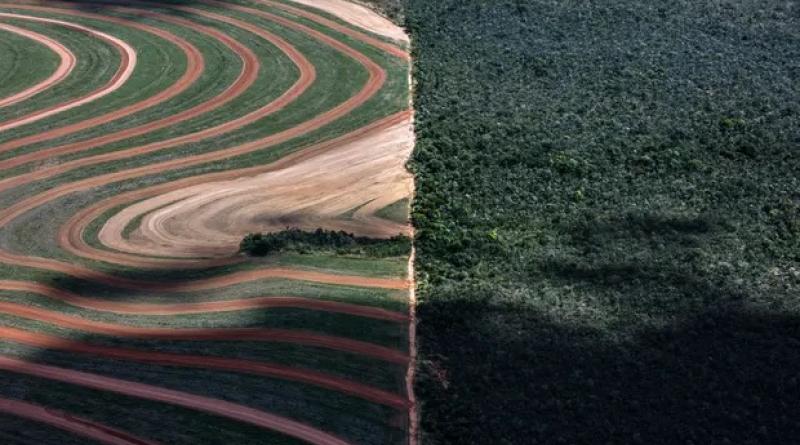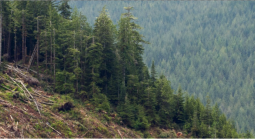‘Extractivism’ is destroying nature: to tackle it Cop15 must go beyond simple targets

The mass-scale removal of resources is a key driver of biodiversity loss. Extractivism’s grip on the planet must be broken
At the biodiversity Cop taking place in Montreal, much attention will focus on a policy proposal calling for 30% of the planet’s land and oceans to be protected by 2030, known as 30x30. Protected areas have their place in addressing the biodiversity crisis, but we also know that they are insufficient. Since the 1970s, they have increased fourfold globally, expanding to about 17% of the planet, but extraction rates have more than tripled. This unrelenting expansion of forestry, mining, monoculture farming and fossil fuel developments is a central driver of biodiversity loss. Ending or at least reducing “extractivism” must be front and centre at Cop15.
Extractivism is more than extraction. Extraction is the not inherently damaging removal of matter from nature and its transformation into things useful to humans. Extractivism, a term born of anti-colonial struggle and thought in the Americas, is a mode of accumulation based on hyper-extraction with lopsided benefits and costs: concentrated mass-scale removal of resources primarily for export, with benefits largely accumulating far from the sites of extraction. One estimate puts the drain south to north at a staggering $10tn (£8tn) a year.
Yet across all political lines and in countries around the world, the story goes that these massive developments bring us all wellbeing: jobs that put food on the table and taxes that fund education and healthcare. Where we live, in British Columbia, is no exception. After retiring from his post as the province’s premier and responding to criticisms about his patchy environmental record, John Horgan summarised the prevailing ethos: “We will continue to have vigorous debates about old-growth logging, about oil and gas, about mining. But these are absolutely essential components to us moving forward.”
Absolutely essential? It’s an interesting choice of words. Extractivism does bring resource rents and tax revenue that funds public services, such as schools and hospitals. It creates jobs. This is a big part of Horgan’s double-think move to open and then close debate on extraction. The perception of public interest, even if unevenly distributed, keeps extractivism’s grip on the future tight, as if it cannot be dislodged, as though it will work out in the end: more extraction here is an absolute necessity to enable another, greener, safer world. Justin Trudeau justified buying an uneconomic, public-funds-draining, and Indigenous rights-busting pipeline by arguing that it was necessary for good climate policy, in that it bought goodwill for a carbon tax.
Extractivism may be robust and durable itself, but it is not creating robust and durable conditions of life for all. It creates deep insecurity and extreme danger – heatwaves, fires, floods – all of which happened in British Columbia in the space of six months in 2021, causing at least 619 deaths. A recent report estimated the damage at C$10 to 17bn (£6 to 10bn) – that’s 3% to 5% of the province’s GDP.
Internationally, extractivism is centrally implicated in the uneven costs of the climate crisis, an issue forced to the top of the Cop27 climate agenda by Indigenous people, activists and global south countries. Beyond this, polluted extractive sites dispossess Indigenous and local people, while minerals, lumber and oil typically flow elsewhere, enriching distant shareholders, states and CEOs. These benefits and burdens of extractivism reflect racial hierarchies forged in colonial encounters and slavery, as a recent UN human rights report concluded.
Protected areas seem like an obvious direct solution to biodiversity loss: just set aside some land for nature. But many Indigenous and human rights organisations object to 30x30 because of its potential to “devastate the lives of Indigenous peoples”; protected areas are also not doing enough to curb the extraction that is driving biodiversity loss.
Instead, we need to get to work on building a world where health, safety and wellbeing are not tied to endless extraction. Building this world must be led by those who are most affected by extractivism and informed by centuries of radical, transformation-seeking struggles.
In Canada, important ideas are circulating about shifting away from GDP towards indicators of First Nations-defined economic wellbeing. There are calls for international redistribution and reparations being advanced at climate and biodiversity debates to attenuate the extractivism that accompanies high levels of poverty and debt. These ideas must move from the margins to the centre – including at Cop15 – where calls for debt cancellation and restructuring are yet to be agreed.
These actions might not appear to be direct wins for biodiversity but they are essential for breaking extractivism’s tight grip and repairing a long history of colonial and racialised exploitation. Extractivism’s grip must be loosened if Cop15 and subsequent state action are going to accomplish anything meaningful for biodiversity.
-
Rosemary Collard is an associate professor at Simon Fraser University. Jessica Dempsey is an associate professor and co-director of the Centre for Climate Justice at the University of British Columbia
cover photo: Deforestation in Brazil, driven by the push for cultivation of soy and corn for export. Photograph: Marizilda Cruppe/Greenpeace





